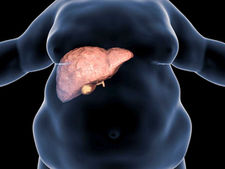
Deep Vein Thrombosis (Dvt)
DEEP VEIN THROMBosis (DVT) What is deep vein thrombosis?
Deep vein thrombosis is the formation of a clot in a deep vein. These clots usually occur in the leg. If you have symptoms of the disease, get treatment immediately to prevent serious complications.
What are the effects of DVT?
Although DVT itself is not life-threatening, blood clots have the potential to break free and travel throughout the bloodstream. A pulmonary embolism occurs when traveling blood clots lodge in the blood vessels of your lung. Since this can be a life-threatening condition, immediate diagnosis and treatment is required.
What are the symptoms of DVT?
Half of those with DVT in their legs develop symptoms of intermittent leg pain and swelling that can last for months to years. This syndrome can cause blood to “pool” more than it should due to damage to the valves and the inner lining of your veins. This increases the pressure in your veins and causes pain and swelling. This condition may present with the following symptoms: pooling of blood, chronic leg swelling, increased pressure in your veins, increased pigmentation or discoloration of your skin, leg ulcers known as venousstasis ulcers.
General symptoms of DVT can be listed as follows: Abdominal pain or side pain (if blood clots affect the veins deep in your abdomen). Swelling of your leg or arm (may happen suddenly). Red or discolored skin. The veins near the surface of your skin are larger than normal. Pain or tenderness in your leg or arm (only when standing or walking). The swollen or painful area of your leg or arm is warmer than normal.
What are the risk factors that cause DVT? Being over 40 years old. Being overweight. Having a genetic disease. Having an autoimmune disease such as lupus, vasculitis, or inflammatory bowel disease. Having cancer and some cancer treatments (chemotherapy). Having a family history of DVT. Having limited blood flow in a deep vein due to an injury, surgery, or immobilization. Sitting for long periods of time, being immobile after surgery or a serious injury, and not moving for long periods of time. Being pregnant or having recently given birth to a baby. Using tobacco products. Having varicose veins. Taking birth control pills or hormone therapy. Having a central venous catheter or pacemaker. Having COVID-19. What are the DVT Treatment Methods? In the first stage, medical treatment is applied and interventional intervention may be recommended depending on the location of the clot. The aims of the treatment can be listed as follows. To prevent the blood clot from growing, to prevent the clot from being carried to the lungs, to prevent the recurrence of the clot. Use of blood thinners (anticoagulants): Low molecular weight heparin and warfarin applied under the skin are the most commonly used blood thinners. If large clots cause tissue damage, they may need to be removed with surgery. Surgical approach is recommended only in the most severe cases, as it involves risks such as infection, vascular damage and bleeding. Compression Socks: Apart from medication, the most important step in DVT treatment is wearing compression socks. The socks should have a pressure of 30-40 mmHg and should be long enough to reach below the knee level. Compression socks should be worn constantly for the first few days, and then only during the day. The socks are put on before getting out of bed and taken off at bedtime in the evening. Socks should be worn for at least 2 years. Resting by elevating the legs above heart level in the first days reduces the complaint in the legs. Dissolving the clot: The classical treatment of DVT is as stated above. This treatment protects the patient from pulmonary embolism and significantly reduces leg-related complaints. However, the leg may not completely return to normal due to the clot in the leg not completely dissolving and the blockage not being opened. Opening the blockage is only possible with some special methods. These methods include administering clot-dissolving drugs to the blocked vein through catheters to dissolve the clot, and removing the clot with catheters or surgical methods. Once the clot is dissolved, angioplasty and stents may sometimes be required to prevent the opened vessel from becoming blocked again. These methods really help the patient's complaints to disappear significantly or completely.
FOR INFORMATION AND APPOINTMENT, YOU CAN LEAVE YOUR NUMBER OR ASK OUR EXPERTS
YOU CAN LEAVE YOUR NUMBER FOR INFORMATION AND APPOINTMENT AND ASK QUESTIONS TO OUR EXPERTS



-04.png)
-06.png)
-05.png)
-08.png)
-07.png)























